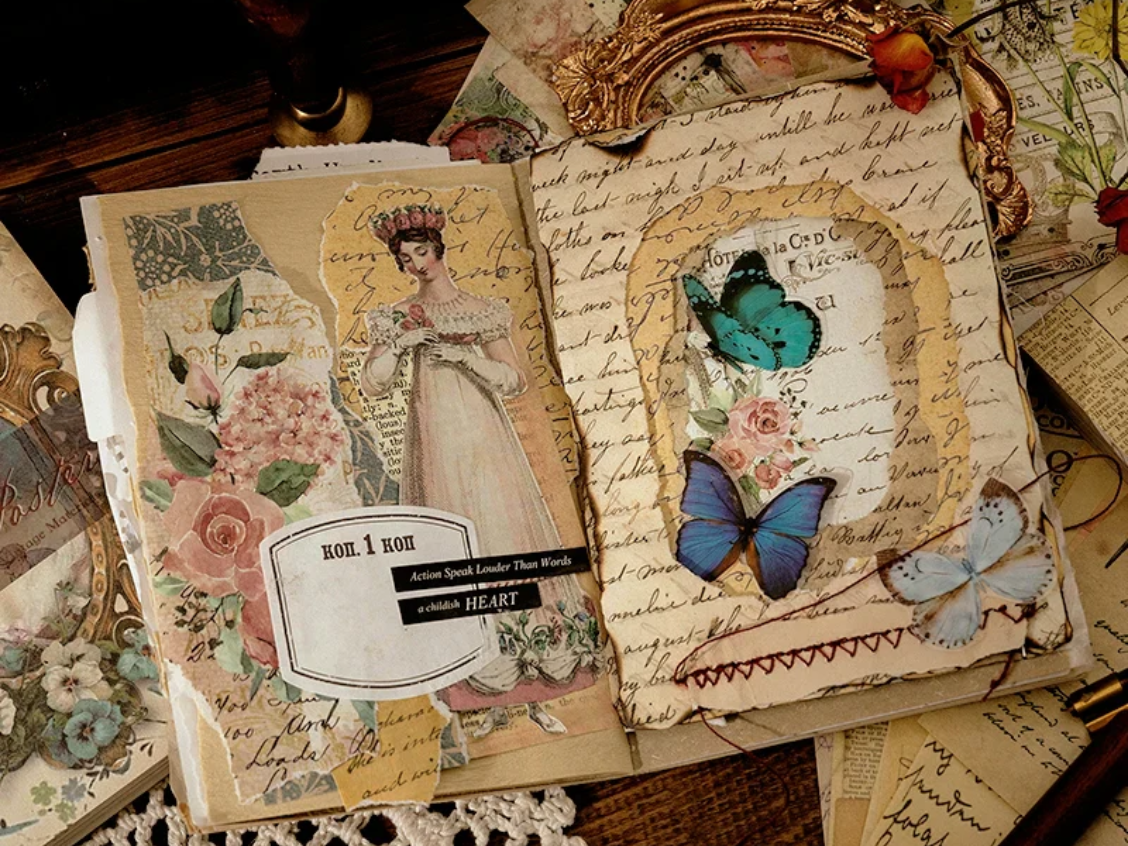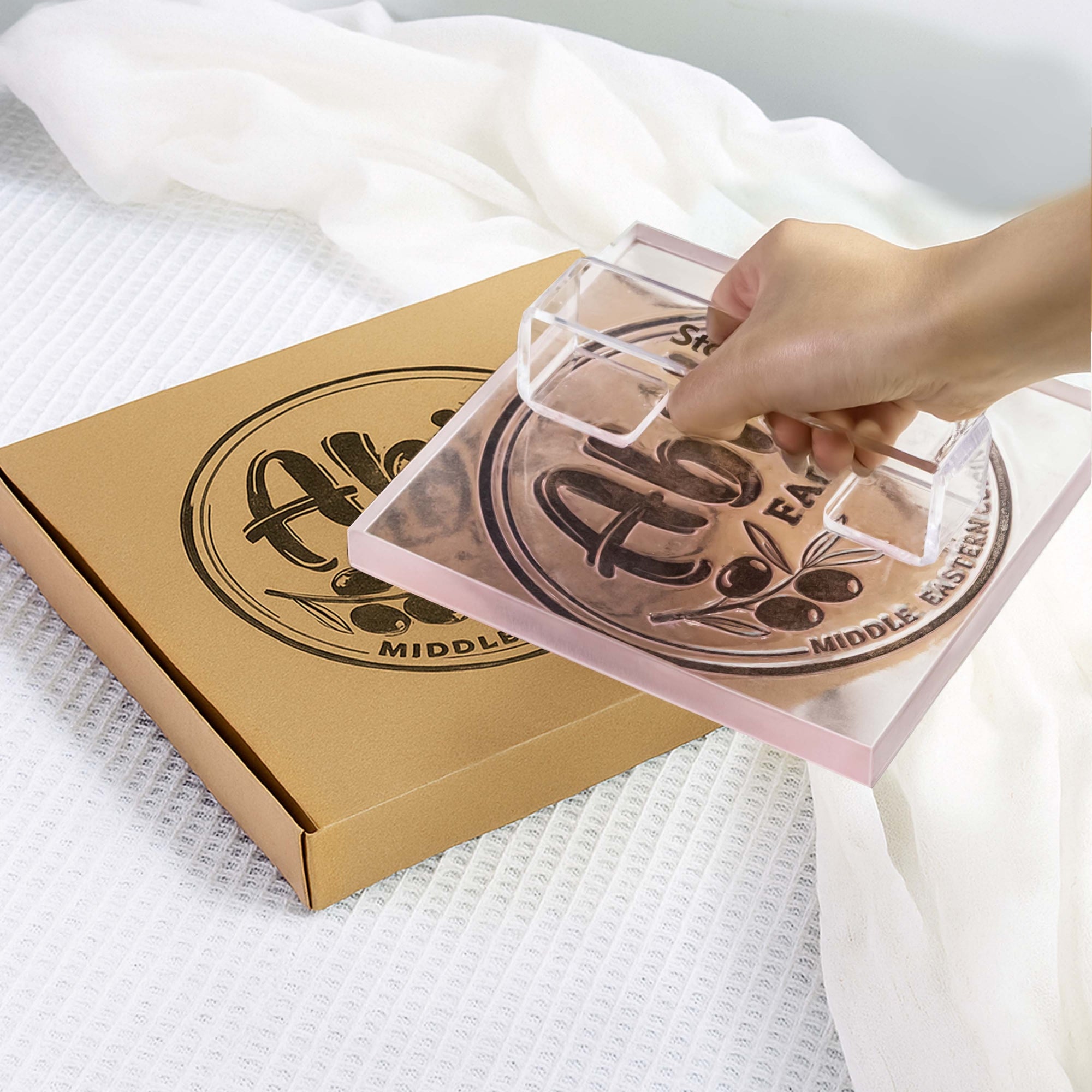Arte del collage ti permette di liberare la tua creatività combinando materiali diversi come carta, tessuti e oggetti in un'unica opera visivamente accattivante. La chiave per creare profondità e far risaltare il tuo collage è la tecnica della stratificazione, ovvero la sovrapposizione artistica di vari elementi l'uno sull'altro. Questa guida completa ti guiderà passo dopo passo attraverso il processo di stratificazione, così potrai creare un capolavoro multidimensionale che rifletta la tua visione artistica unica.
Passaggio 1: seleziona la tua base
Prima di procedere con la stratificazione, è necessario scegliere la base o lo sfondo perfetto. Questo strato inferiore definisce l'aspetto generale e fornisce una base per tutto ciò che verrà aggiunto in superficie. La base scelta può completare, creare contrasto o fondersi con gli altri materiali che si intende utilizzare.
Una scelta interessante per la tua base è la Carta per collage giorno e nottePresenta temi chiari e scuri a contrasto che creano uno sfondo accattivante fin dall'inizio. Gli elementi chiari e scuri forniscono già una certa profondità.
Non aver paura di creare contrasto tra il tuo strato di base e gli altri elementi del collage. Grandi differenze di colore, motivo o tema possono effettivamente rendere il tuo lavoro finale visivamente più interessante. Una base d'impatto ti permette di creare strati di grande impatto.
Che tu scelga l'effetto drammatico della carta Day and Night o un'altra opzione testurizzata, scegli un fondotinta che stimoli la tua creatività. Questo primo strato essenziale unificherà e sosterrà tutti gli strati successivi che aggiungerai con cura.
Fase 2: Costruisci le tue fondamenta
Con il tuo sfondo accattivante, è il momento di costruire il primo strato superiore. Questo getta le basi per tutte le texture, i colori e le forme che aggiungerai in seguito.
Per questo strato di base, utilizzare fogli di carta più grandi come il Carta per scrapbooking retrò "Il sogno di Anna"Queste carte oversize di ispirazione vintage creano uno sfondo fresco e tridimensionale, perfetto per disporre gli oggetti a strati.
Per incollare i fogli più grandi alla base, hai diverse opzioni. Una semplice colla stick è perfetta per i fogli leggeri. Per i materiali più pesanti, usa spray adesivi senza acidi o nastri biadesivi adatti a collage e scrapbooking.
Il segreto è fissare saldamente questi pezzi più grandi, eliminando eventuali bolle o pieghe. Questa base liscia permette di sovrapporre facilmente altri strati. Non aver paura di sovrapporre i fogli più grandi mentre costruisci questo strato.
L'utilizzo di carte audaci e di grandi dimensioni come Anna's Dream crea immediatamente interesse visivo e profondità. Divertitevi a sperimentare diverse posizioni mentre realizzate questo importante strato di base.

Fase 3: Aggiungi consistenza e fascino
Le texture sono fondamentali per creare collage accattivanti e dinamici. Sovrapponendo materiali con texture diverse, si aggiunge profondità, si ottiene un effetto tridimensionale e si crea movimento.
Utilizzo Nastro in pizzo vintage in PET Per aggiungere una delicata texture in pizzo ai tuoi capi base. Questo nastro trasparente, dal motivo intricato, può essere sovrapposto in modo discreto o audace per un effetto delicato ma accattivante.
Mentre aggiungi dettagli testurizzati, pensa a come si abbinano ai materiali che hai già sovrapposto. Mescolare con cura texture come pizzo, carta e tessuto crea un aspetto generale organico e coerente.
In alternativa, fai risaltare una texture a contrasto, come il pizzo vintage, su uno sfondo di carta liscia più semplice o a tinta unita. Questo renderà l'elemento texturizzato un punto focale.
Sfrutta la tua creatività con prodotti come il Vintage Lace Tape per creare profondità e dimensione multistrato attraverso texture miste che catturano l'attenzione sull'intero collage.

Fase 4: creare interesse visivo con dimensioni diverse
Mescolare pezzi di diverse dimensioni è fondamentale per creare un collage a strati interessante e tridimensionale. Non usare solo pezzi di grandi dimensioni.
IL Carta Nostalgia Time Box Contiene stampe vintage più piccole raffiguranti oggetti come valigie e vecchie macchine fotografiche. Questi piccoli pezzi sono perfetti da sovrapporre ai tuoi elementi base più grandi.
Siate creativi tagliando o strappando le piccole stampe per creare forme e silhouette uniche e organiche, non solo quadrati e rettangoli.
Disporre strategicamente questi pezzi Time Box più piccoli tra gli elementi più grandi, sovrapponendone alcuni e lasciandone intravedere altri qua e là. Questa varietà di dimensioni conferisce un aspetto giocoso e dinamico.
Le immagini nostalgiche delle piccole stampe creano anche un piacevole contrasto strutturale con le superfici più lisce della carta o del tessuto.

Fase 5: Padroneggiare l'arte della sovrapposizione
La sovrapposizione di elementi diversi è il segreto per creare una profondità sorprendente e dare al collage un aspetto tridimensionale. Sovrapponendo i materiali, si crea una sorprendente illusione dimensionale che dà vita alla propria opera.
IL Legatura classica con adesivi cavi vintage Sono perfetti per valorizzare strati sovrapposti. I loro decori traforati lasciano trasparire i colori e le texture sottostanti, creando un fantastico effetto 3D.
Quando si sovrappongono adesivi, posizionateli a contrasto su sfondi complementari per ottenere il massimo impatto. Lasciate che carte o tessuti dai colori vivaci traspaiano attraverso i disegni degli adesivi.
Puoi anche sovrapporre gli adesivi di rilegatura parzialmente sovrapposti per un aspetto organico e fluido. Sovrapponili con angolazioni diverse per un impatto visivo più interessante.
Quando sovrapponi, tieni a mente la composizione generale. Sovrapponi alcuni elementi più di altri per guidare lo sguardo dell'osservatore. Usa la sovrapposizione per enfatizzare i punti focali e creare equilibrio.
Utilizzando adesivi come questi, sovrapponendo intenzionalmente, è possibile trasformare materiali piatti in capolavori artistici multidimensionali.

Passaggio 6: utilizzare il colore in modo efficace
Il colore fa risaltare il tuo collage. L'uso di colori contrastanti o di diverse tonalità di chiaroscuro crea punti focali vibranti e un aspetto generale coerente.
IL Cornici in PVC Brilliant Stars Sono perfetti per far sì che determinati elementi colorati catturino l'attenzione. Usa le cornici in plastica colorata per evidenziare le aree che vuoi che catturino l'attenzione. La texture in PVC crea un piacevole contrasto con la carta.
Usa tonalità contrastanti come il blu e l'arancione o il rosso e il verde per far risaltare i dettagli. Anche i colori complementari come il giallo e il viola creano un'atmosfera vibrante ed energica.
Per un look più sobrio, punta su colori analoghi, uno accanto all'altro sulla ruota dei colori, come il blu e il verde. Mescolare toni chiari e scuri aggiunge profondità.
Non abbiate paura di sperimentare con abbinamenti di colori inaspettati, persino contrastanti. A volte le tonalità dissonanti si fondono in qualcosa di straordinariamente bello.
Utilizza colori vivaci in modo strategico con prodotti come Brilliant Stars per creare opere d'arte a strati visivamente sorprendenti che entusiasmano.

Passaggio 7: aggiungere elementi 3D
Gli strati piatti creano profondità, ma l'aggiunta di elementi 3D veri e propri porta il tutto a un livello superiore. Oggetti come bottoni, nastri e fiori secchi creano texture accattivanti che risaltano.
IL Adesivi per animali domestici di Wizard Magic Contiene scene adesive illustrate che puoi usare come punti focali 3D accattivanti. Sovrapponi e incolla queste scene sulle aree che vuoi mettere in risalto.
Quando aggiungi elementi effimeri 3D, disponili a diverse altezze e angolazioni per creare delle fantastiche dimensioni.Lascia che un nastro curvo o un fiore scenda lungo gli elementi piatti.
È possibile incollare anche oggetti 3D più spessi, come i bottoni, utilizzando uno spesso strato di adesivo per ottenere una texture in rilievo di grande impatto.
Per aggiunte 3D delicate, usa gli adesivi in modo strategico, in modo che non siano troppo pesanti. Una sottile linea di colla adesiva o piccoli punti di colla ti permettono di incollare gli oggetti senza creare grumi ingombranti.
Che si tratti di accenti discreti o di elementi centrali audaci, gli oggetti 3D creano collage artistici e tridimensionali che abbagliano.

Passaggio 8: bilancia la tua composizione
È fondamentale mantenere una composizione complessivamente equilibrata, sovrapponendo colori, texture, forme ed elementi diversi. L'equilibrio permette all'occhio di muoversi fluidamente all'interno dell'opera d'arte.
Esistono due approcci principali all'equilibrio: simmetrico e asimmetrico. La simmetria distribuisce uniformemente il peso visivo, mentre l'asimmetria crea equilibrio attraverso variazioni intenzionali.
Per la simmetria, inquadra un punto focale centrale usando Cornici Brilliant StarsPer ottenere asimmetria, sfalsare gli elementi ponderati per una composizione armoniosa ma varia.
Bilancia la "pesantezza" delle diverse aree distribuendo strategicamente colori, texture o forme audaci e contrastanti sulla tela. Ad esempio, bilancia un gruppo di elementi scuri con un'unica area ad alto contrasto.
Utilizzare gli spazi negativi (aree non toccate) come spazio di respiro tra le aree ponderate.
Trovare l'equilibrio richiede pratica: fai spesso un passo indietro e affidati al tuo istinto artistico. Studia il tuo progetto, apportando modifiche finché non ti sembra perfetto.
Considerando attentamente il modo in cui gli elementi interagiscono, è possibile creare un collage equilibrato e coeso che guidi il percorso dell'osservatore.
Passaggio 9: abbracciare lo spazio negativo
Mentre costruisci strati nel tuo collage, lascia alcune aree libere: questi spazi negativi consentono agli occhi dell'osservatore di riposare e impediscono che l'opera d'arte sembri troppo affollata. Prodotti come Adesivi per finestre al chiaro di luna Ti permettono di giocare con la trasparenza, creando effetti di spazio negativo unici, in cui i colori e le texture sottostanti traspaiono. Applica questi adesivi trasparenti su un'area per creare un punto focale aperto e dinamico. Oppure usali per incorniciare aree non trattate.
Distribuisci intenzionalmente gli spazi negativi sulla tela, tenendo conto dell'equilibrio e della fluidità generale. Troppi spazi vuoti in un'area possono dare un aspetto irregolare. Uno spazio centrale aperto può fornire un punto di appoggio che unifica una composizione complessa, mentre la spaziatura dei bordi crea un'inquadratura naturale.
Quando aggiungi livelli, fai periodicamente un passo indietro e verifica se hai bisogno di più spazio negativo per un aspetto più pulito e meno disordinato. Lo spazio negativo evita il sovraffollamento ed è essenziale per dare respiro agli elementi del tuo collage.

Fase 10: Ritocchi finali e conservazione
Una volta terminato, potresti voler sigillare il tuo collage a strati per proteggerlo da polvere, sbiadimento e usura nel tempo. Le opzioni più comuni includono sigillanti polimerici da applicare a pennello per una finitura lucida o opaca, sigillanti spray per un rivestimento completo e resina da versare per pezzi 3D spessi.
Prima di applicare qualsiasi sigillante, testarlo su un campione per assicurarsi che non scolorisca o alteri la consistenza dei materiali. Applicare strati leggeri e uniformi, lasciando asciugare bene tra uno strato e l'altro. I sigillanti offrono protezione UV e impediscono il distacco dei pezzi.
Il tuo collage sigillato (o non sigillato) può essere incorniciato dietro un vetro per essere esposto. In alternativa, puoi esplorare metodi di cablaggio/sospensione per una corretta esposizione delle opere d'arte 3D.
Considerate di esporre la vostra splendida creazione multistrato in mostre d'arte o fiere dell'artigianato! Una corretta sigillatura ed esposizione ne garantirà l'aspetto impeccabile per anni.
Crea il tuo capolavoro a strati
Il collage a strati permette alla tua voce artistica di manifestarsi. Costruisci texture, colori e materiali in modo autentico. Fidati del tuo istinto per capire quando un'opera sembra completa. Utilizza efficacemente contrasti ed elementi dimensionali, ma lascia spazio anche a spazi aperti e negativi. Soprattutto, goditi il gratificante processo di creazione di un capolavoro multistrato e accattivante che, se adeguatamente conservato, conquisterà per anni. Lascia che gli strati rappresentino il culmine della tua creatività unica.
Per saperne di più
- Introduzione di sigilli di cera e strumenti -
Stamprints - Fasi di produzione del sigillo di cera -
Stamprints - Sigillo di cera per matrimonio -
Stamprints - Perché hai bisogno di un timbro in gomma personalizzato? |
Stamprints - Come ottenere i migliori timbri personalizzati per la tua attività: alcuni consigli da considerare |
Stamprints






